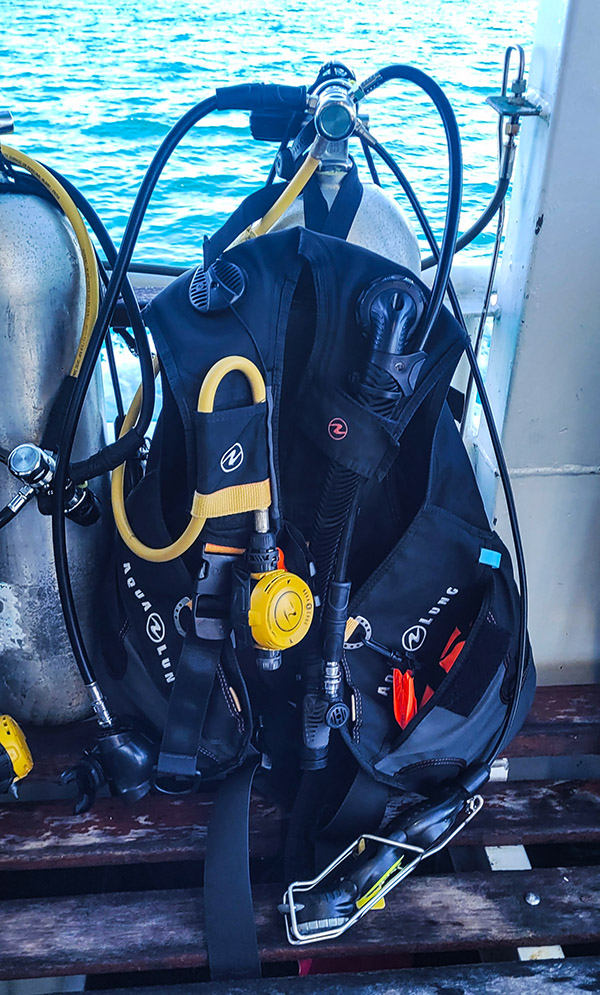By Mike Huber
Having spent 11 months abroad and successfully (I am the one gauging the definition of success, by the way) traveling through 7 countries (some multiple times) returning to my home country of the United States of America was a welcome way to round out 2024. The past month has been filled with catching up with family and friends, as well as catching 3 mice and 12 flying squirrels that seem to have filled my vacancy in my parent’s house in Maine. The break was also filled with replacing some of my gear and clothes that were “gently used” throughout my travels in Oceania and Southeast Asia. Outside the occasional waking up at 3:00 a.m. and freaking out that I am sleeping in my old bedroom at my parents’ house, homeless and unemployed (clearly, that should be my intro if I ever join a dating site), it’s been a really productive month.
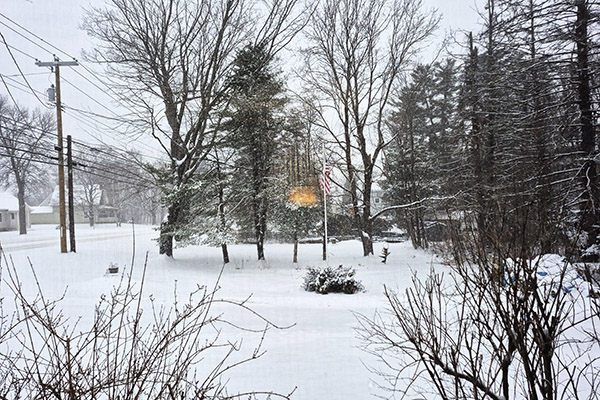 With the New Year approaching my plan was to begin traveling through South America for the entire year by motorcycle. In November that plan quickly changed (imagine that) when a fellow rider I had camped with four years ago in Death Valley National Park messaged me and stated that he and another rider were about to embark on a 1-month motorcycle journey through India, Pakistan, Nepal, Bhutan, and Bangladesh in February on Royal Enfield Himalayans. I wasn’t too impressed as I figured it would be some BS tour with a guide and not really count as a motorcycle adventure. He replied stating that was not the case and it was just the two of them. It took me about 15 minutes to reply stating that I was in. He promptly let me know that he wasn’t inviting me and was just discussing the trip with me. At any rate I invited myself and they seemed okay with that. I mean, who wouldn’t be? I am an absolute joy to be around.
With the New Year approaching my plan was to begin traveling through South America for the entire year by motorcycle. In November that plan quickly changed (imagine that) when a fellow rider I had camped with four years ago in Death Valley National Park messaged me and stated that he and another rider were about to embark on a 1-month motorcycle journey through India, Pakistan, Nepal, Bhutan, and Bangladesh in February on Royal Enfield Himalayans. I wasn’t too impressed as I figured it would be some BS tour with a guide and not really count as a motorcycle adventure. He replied stating that was not the case and it was just the two of them. It took me about 15 minutes to reply stating that I was in. He promptly let me know that he wasn’t inviting me and was just discussing the trip with me. At any rate I invited myself and they seemed okay with that. I mean, who wouldn’t be? I am an absolute joy to be around.

This will surely be one of the more challenging adventures for me in quite some time. It really began to hit me while packing my gear in freezing cold Maine. Even though this nomadic lifestyle has been my life for the past eight years, there always is some anxiety that comes when the reality of the adventure begins to sink in. After India, per my usual I have no plan and must mentally prepare to face isolation yet again for an unknown amount of time. Of course, that is until I meet 100 new beautiful friends, which is sure to happen. Another issue I am concerned with is I sold my BMW GS1250 to my friend who was babysitting it and fell in love with the bike (that’s not hard to do as it’s a great motorcycle). Well, he sold it, and with it my helmet, jacket, etc. So, riding these countries with rental gear is something I am apprehensive about. Buying new gear really isn’t an option as once this trip is wrapped up there is still no definitive plan for my next location or activities. As in the past, I place that as a problem for “Future Mike Huber,” and he is pretty good at figuring these things out.
In the meantime, there are still a few weeks to kill prior to motorcycling India. I thought scuba diving Mexico would fill that void. Mexico will also serve as a solid way to ease back into traveling and rebuilding my confidence for what is sure to be an adventurous New Year with plenty of stories to come.
Happy New Year to all.
Join our Facebook ExNotes page!
Never miss an ExNotes blog:



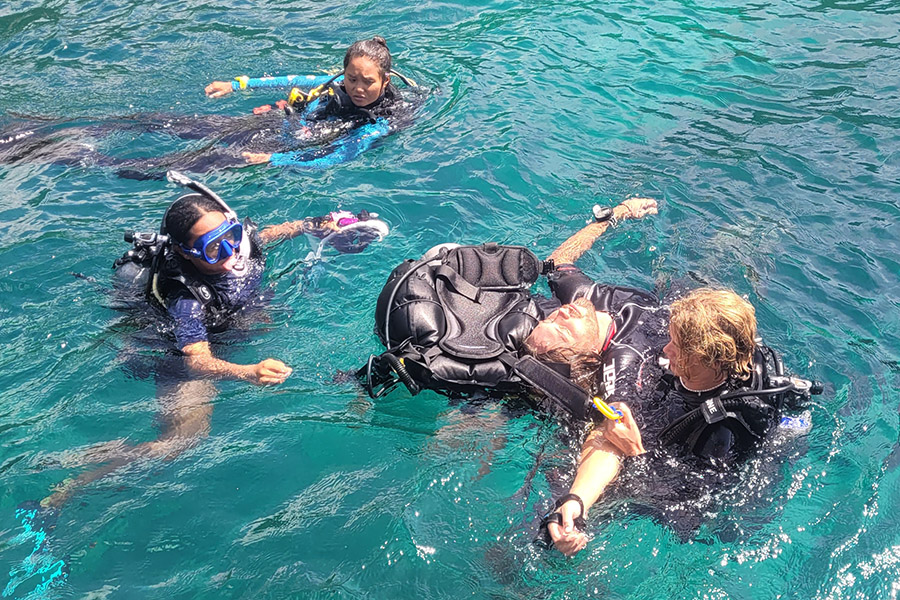
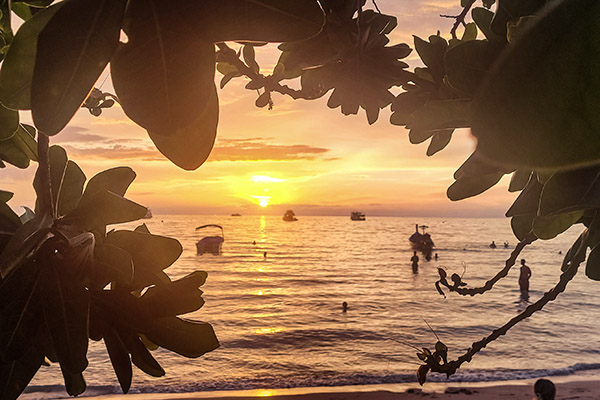 Returning to Koh Tao Thailand seemed the perfect place to take this course. With so many dive shops on the island and being unsure who to use for this next level class I did what I always do. I went to a bar and chatted other divers up. One shop that seemed to always be spoken highly of was Scuba Shack. It was not only a great decision to choose them for their professionalism, but it was right next door to where I was staying on Sairee Beach.
Returning to Koh Tao Thailand seemed the perfect place to take this course. With so many dive shops on the island and being unsure who to use for this next level class I did what I always do. I went to a bar and chatted other divers up. One shop that seemed to always be spoken highly of was Scuba Shack. It was not only a great decision to choose them for their professionalism, but it was right next door to where I was staying on Sairee Beach.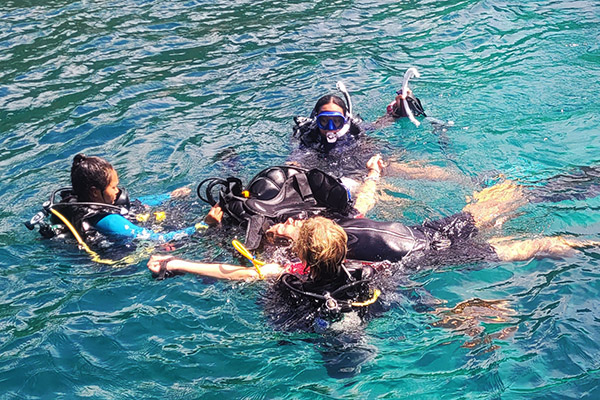
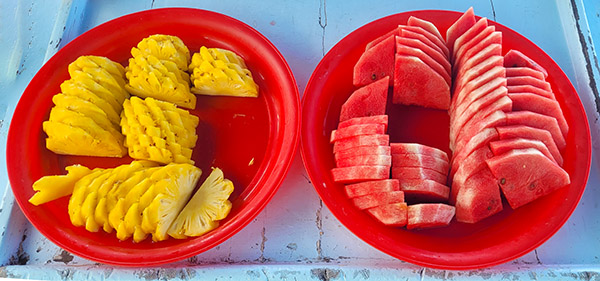
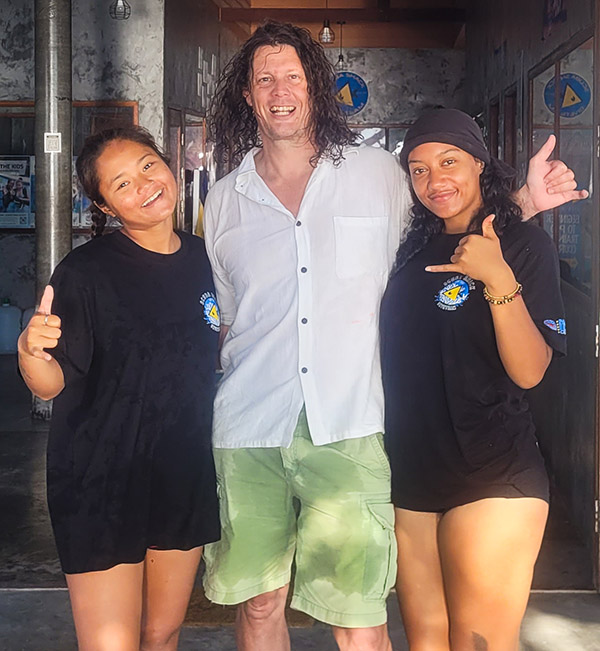
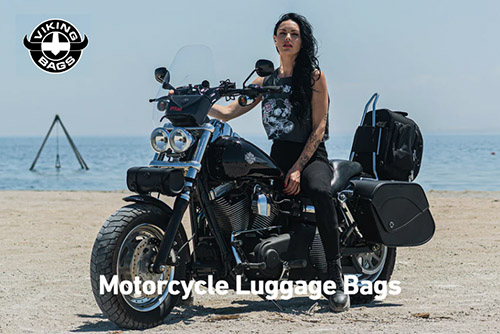
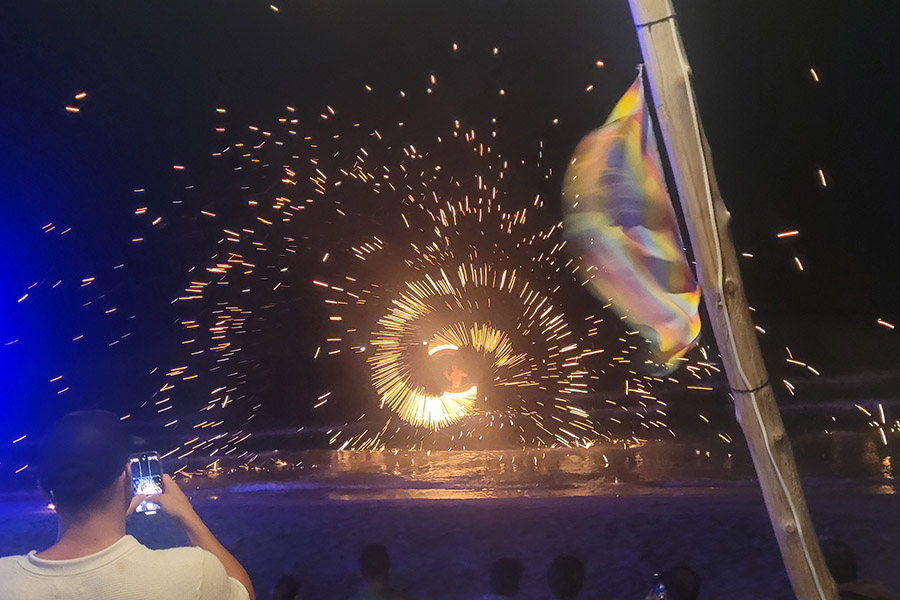
 Koh Tao isn’t exactly easy to travel to from anywhere as you need to fly or bus, and then take a 3-hour ferry out to the island. This to me made it a great destination as I knew those that were there were far off the beaten path and would be well grounded (mentally, not geographically). Although the island was touristy, it was small enough that it was easy to make friends quickly. Another draw to this isolated location was that almost anyone that was here long term had the same line “I came here to visit for two weeks and never left and that was X years ago.” This clearly told me it was a great place to set up a home base for a while and improve on my diving skills.
Koh Tao isn’t exactly easy to travel to from anywhere as you need to fly or bus, and then take a 3-hour ferry out to the island. This to me made it a great destination as I knew those that were there were far off the beaten path and would be well grounded (mentally, not geographically). Although the island was touristy, it was small enough that it was easy to make friends quickly. Another draw to this isolated location was that almost anyone that was here long term had the same line “I came here to visit for two weeks and never left and that was X years ago.” This clearly told me it was a great place to set up a home base for a while and improve on my diving skills.
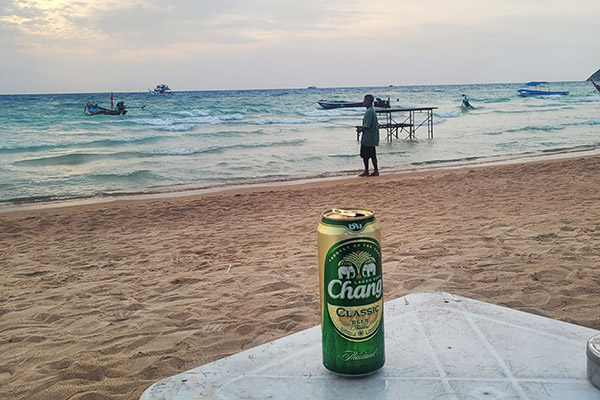
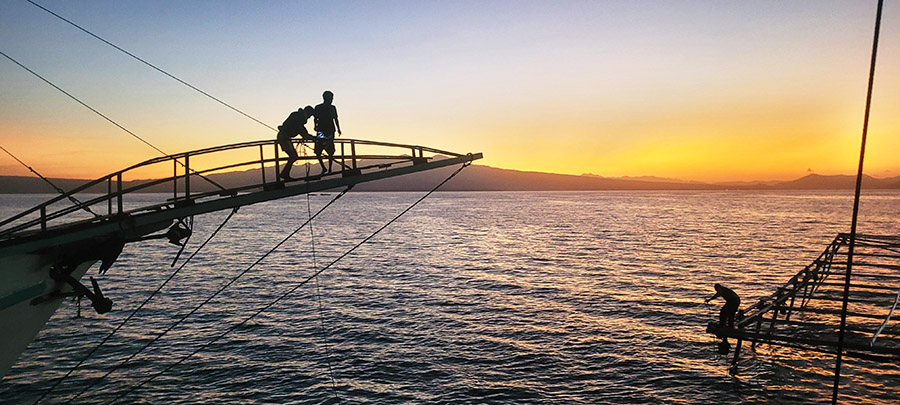
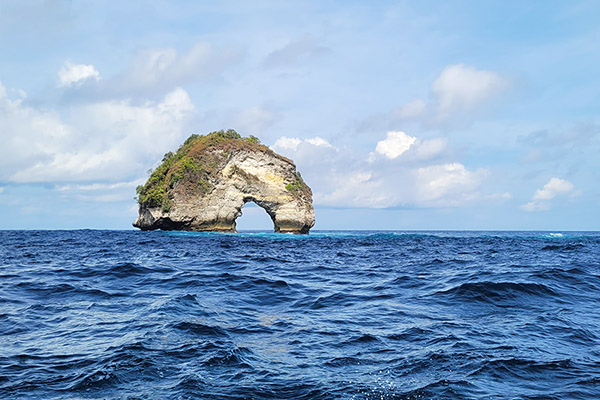 The remainder of the boat ride back to the dock consisted of me pulling sea urchin spines out from everywhere on my body with needle-nosed pliers. That’s one way to pass the time. The spines under my fingernail would need to be pulled out by a doctor at a medical clinic somewhere in Flores. My biggest concern was that it might become infected. The closest clinic was a few kilometers outside of town so I would have to taxi to get there.
The remainder of the boat ride back to the dock consisted of me pulling sea urchin spines out from everywhere on my body with needle-nosed pliers. That’s one way to pass the time. The spines under my fingernail would need to be pulled out by a doctor at a medical clinic somewhere in Flores. My biggest concern was that it might become infected. The closest clinic was a few kilometers outside of town so I would have to taxi to get there.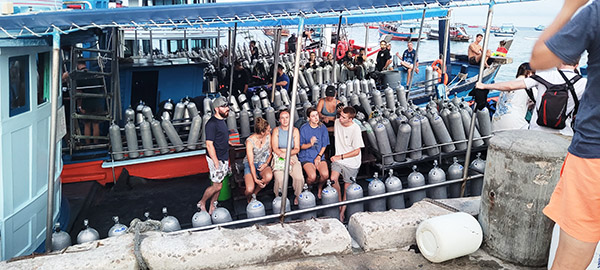
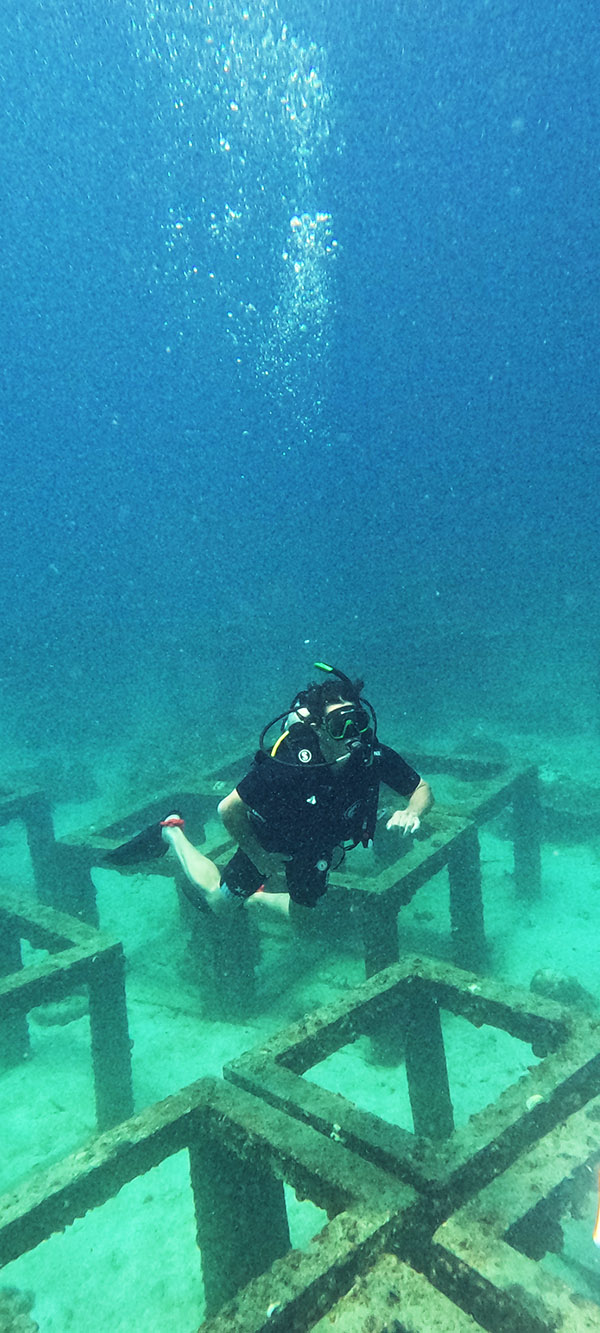
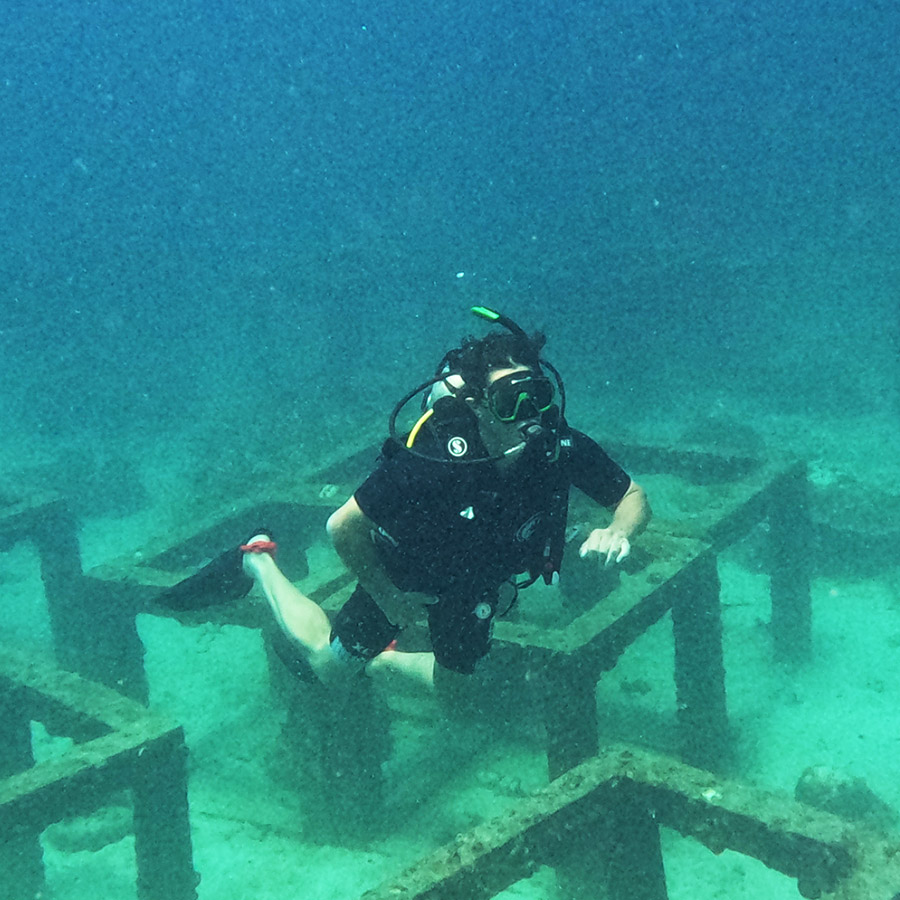
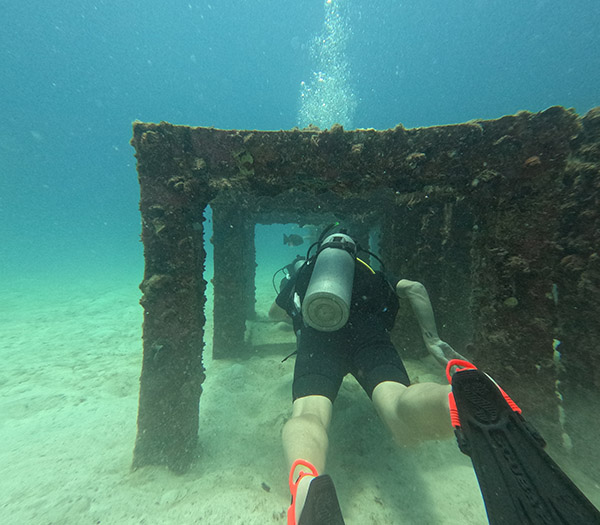
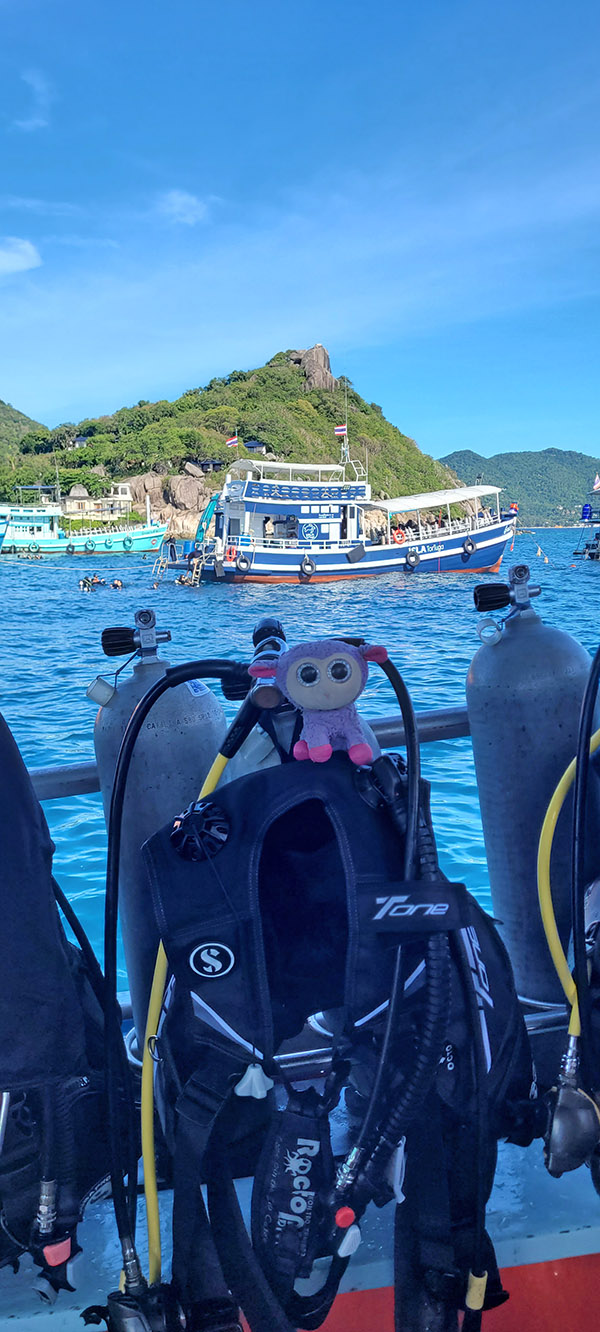
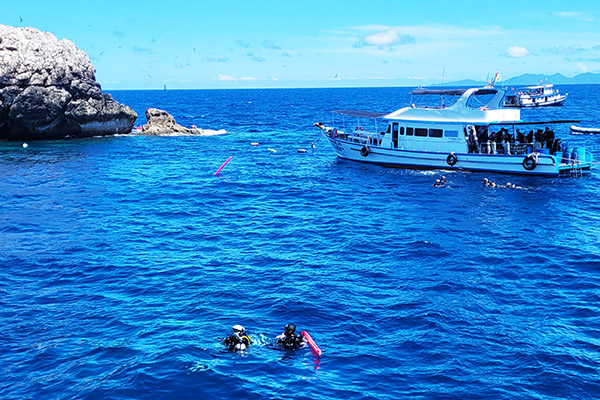
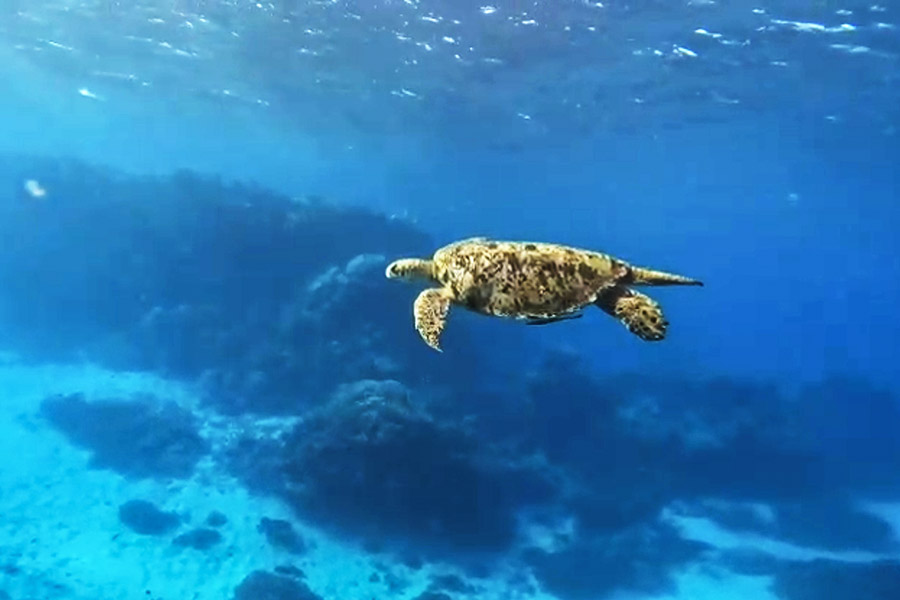
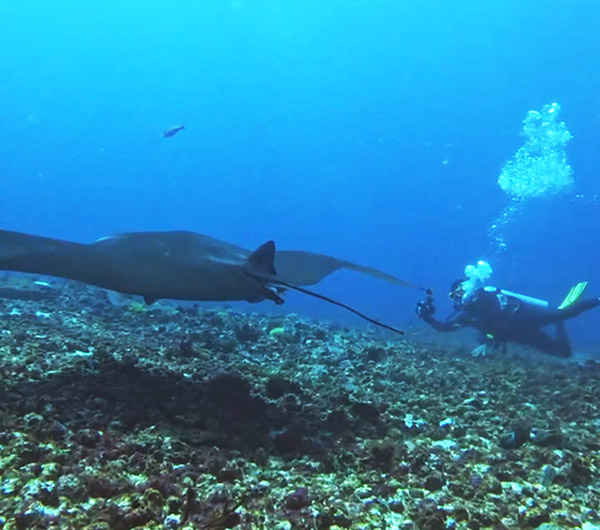


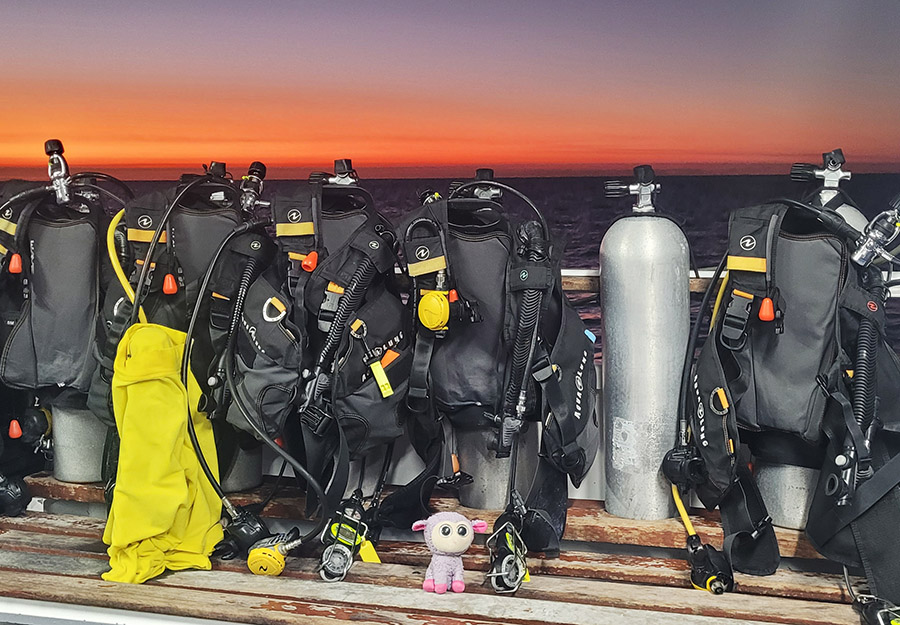
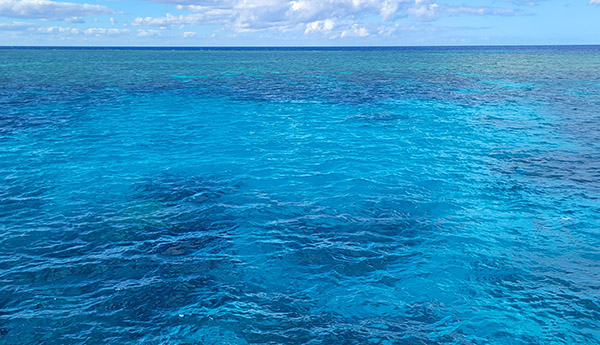 It took the boat about 3 hours to get out to the reef for our first dive. 27 of the others were seasoned divers, so as the newbies we felt privileged they’d help us gear up and make jokes about our fumbling around prior to getting into the water.
It took the boat about 3 hours to get out to the reef for our first dive. 27 of the others were seasoned divers, so as the newbies we felt privileged they’d help us gear up and make jokes about our fumbling around prior to getting into the water.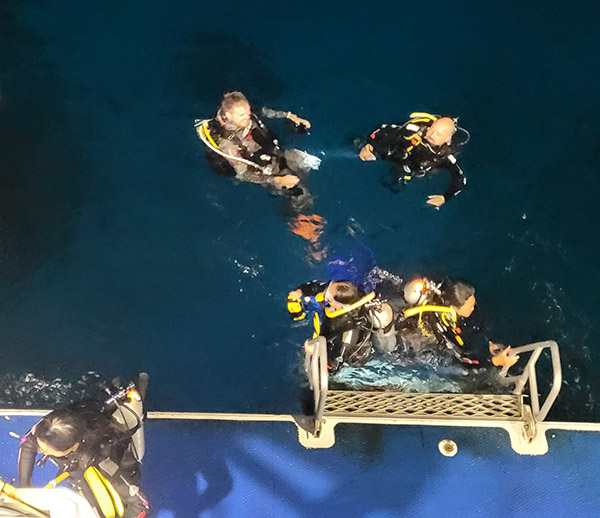
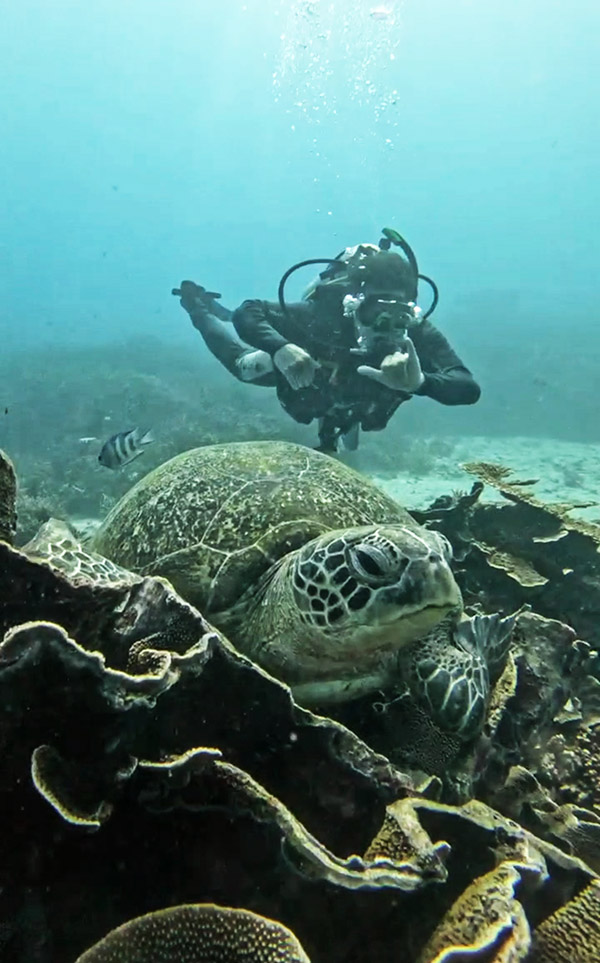
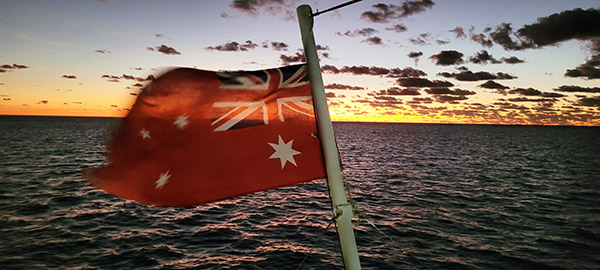
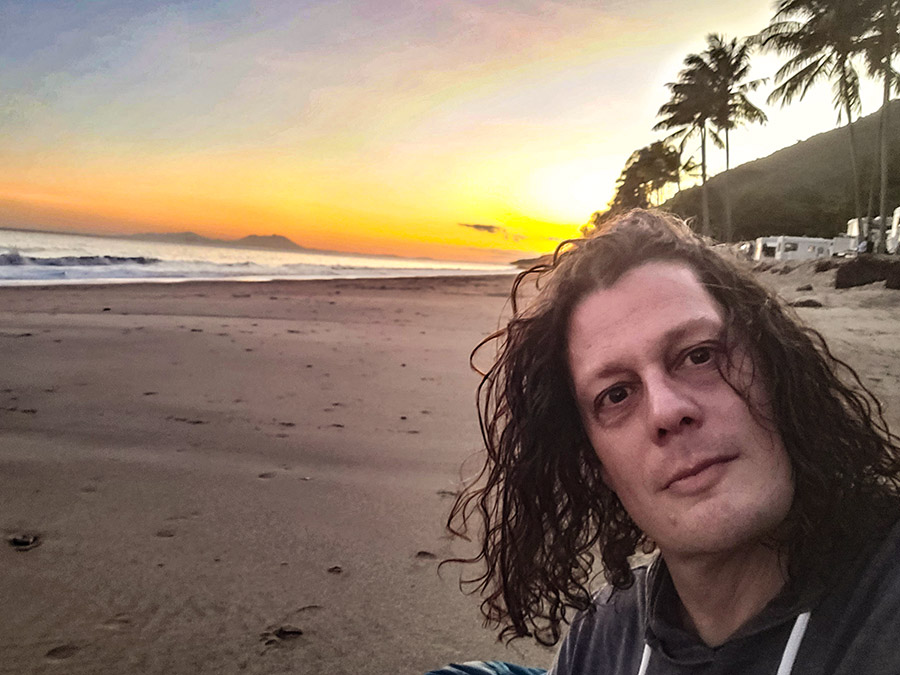
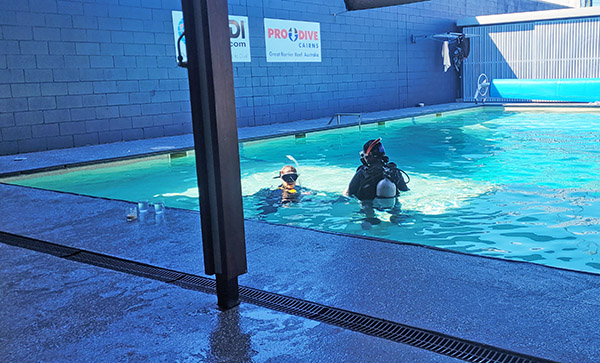 I registered for the dates I would be in Northern Australia for a 5-day Open Water PADI Scuba Certification Class. This class would include two days of classroom/pool training and three days and two nights on a live-aboard boat in the Great Barrier Reef. Upon filling out the school course paperwork it seems that due to my ripe old age of 51 I would require a physical. Not a big deal; there was a clinic across the street from my hostel. I am sure they would rubber stamp me through this, so I booked an appointment. Upon being called into see the doctor I noticed his clothing apparel seemed a bit…off. It wasn’t until I went into his exam room I noticed posters of Elvis all over the walls. Now his butterfly collar, gold glasses, slicked back hair made sense. He was an Elvis impersonator, or a big fan at the least. Once reviewing the physical requirements with him he explained the physical entailed much more than I expected, including chest x-rays, hearing tests, vision test, drug test, etc.
I registered for the dates I would be in Northern Australia for a 5-day Open Water PADI Scuba Certification Class. This class would include two days of classroom/pool training and three days and two nights on a live-aboard boat in the Great Barrier Reef. Upon filling out the school course paperwork it seems that due to my ripe old age of 51 I would require a physical. Not a big deal; there was a clinic across the street from my hostel. I am sure they would rubber stamp me through this, so I booked an appointment. Upon being called into see the doctor I noticed his clothing apparel seemed a bit…off. It wasn’t until I went into his exam room I noticed posters of Elvis all over the walls. Now his butterfly collar, gold glasses, slicked back hair made sense. He was an Elvis impersonator, or a big fan at the least. Once reviewing the physical requirements with him he explained the physical entailed much more than I expected, including chest x-rays, hearing tests, vision test, drug test, etc.